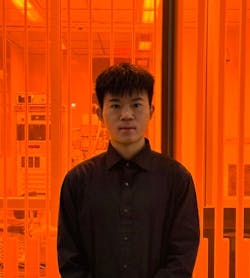Faces in Photonics: Haoqi Zhao, University of Pennsylvania
The Faces in Photonics series shines a light on scientists, researchers, leaders, and educators from all over the world whose work is reshaping the optics and photonics industry. This month we are spotlighting Haoqi Zhao, a Ph.D. student at the University of Pennsylvania.
Laser Focus World: What sparked your interest in photonics?
Haogi Zhao: Light is the most common thing in our daily lives—yet it’s also the most mysterious. It helped develop the relativity theory and quantum mechanics, which opened the door to modern physics. It’s also the most important carrier of information, acting as the cornerstone of the information era.
Currently, with the advanced technology on nanofabrication, optics research is turning to the development of integrated nanophotonic circuits for high-quality light sources, such as microlasers and single-photon sources, and for classical and quantum information processing, which will have great impact on multiple fields—including quantum communications, artificial intelligence, LiDAR, and virtual reality. I’m excited to witness and promote the technology explosion within this field.
LFW: Which research areas are you currently most interested in exploring?
Zhao: I’m mainly interested in developing large-scale photonic integrated circuits for classical and quantum information processing, including a high-dimensional compact laser, high-quality quantum light source, and high-speed and power-efficient photonic machine learning. But I’m also interested in exploring other promising quantum computation platforms, such as superconducting circuits and cold neutral atoms, and building hybrid quantum systems with a photonic platform.
LFW: Most intriguing things you’re seeing within the quantum realm right now?
Zhao: One amazing thing is, after several decades of development, the quantum information processing system is now scaling up—gradually moving from laboratory to industry, and from science to technology.
IBM launched its newest superconducting quantum processor Osprey with 433 qubits, and plans to develop a more advanced quantum processor with more than 4000 qubits within three years. Multiple quantum simulation experiments have been done on a neutral atom platform with dozens of qubits.
The latest Gaussian boson sampling system uses a 144-mode photonic circuit, proving its quantum advantage over the classical supercomputer. Although quantum technology is still in its infancy, I’m optimistic it can have a bright future. At the same time, as a graduate student, I’m very fortunate this field is developing so fast and we have great opportunities within the quantum realm.
LFW: Any advice for people who wonder if the quantum realm is right for them?
Zhao: One common situation junior students may encounter when choosing specific research fields is that it’s often difficult to have a good understanding of the research objective and the big picture before they get into this field. My suggestion is to talk with more professors, researchers, and senior graduate students within this field, during which you can ask about the whole picture to learn why they’re doing the research they chose. The photonics/quantum community is very open and vigorous, and most people are willing to talk about their research.
After that, it’s very useful to read relevant papers and find out about the logic of the research in more detail without diving deep into the theory. If possible, try to visit laboratories while experiments are going on to get a basic idea of what people usually do during an experiment. These steps can help you get a deeper understanding of photonics/quantum technology, which can make it easier to decide whether you want to continue along this research direction.
LFW: Favorite aspect of your job/work?
Zhao: My favorite thing is to finally see the consistency between experimental results and theoretical derivation/numerical calculation after a lot of effort. Experiments are usually full of imperfections and noise, which aren’t considered while developing the theory, causing discrepancies that are often difficult to understand.
It’s fascinating when, after multiple attempts to figure out the reason behind discrepancies and redesigning the experimental setups, we finally observe the behavior predicted by the theory. I still remember some time ago, after several days’ adjustment of the setup, the image captured on camera suddenly showed the exact same pattern we expected—and we were too excited to sleep that whole night.
About the Author
Sally Cole Johnson
Editor in Chief
Sally Cole Johnson, Laser Focus World’s editor in chief, is a science and technology journalist who specializes in physics and semiconductors.

